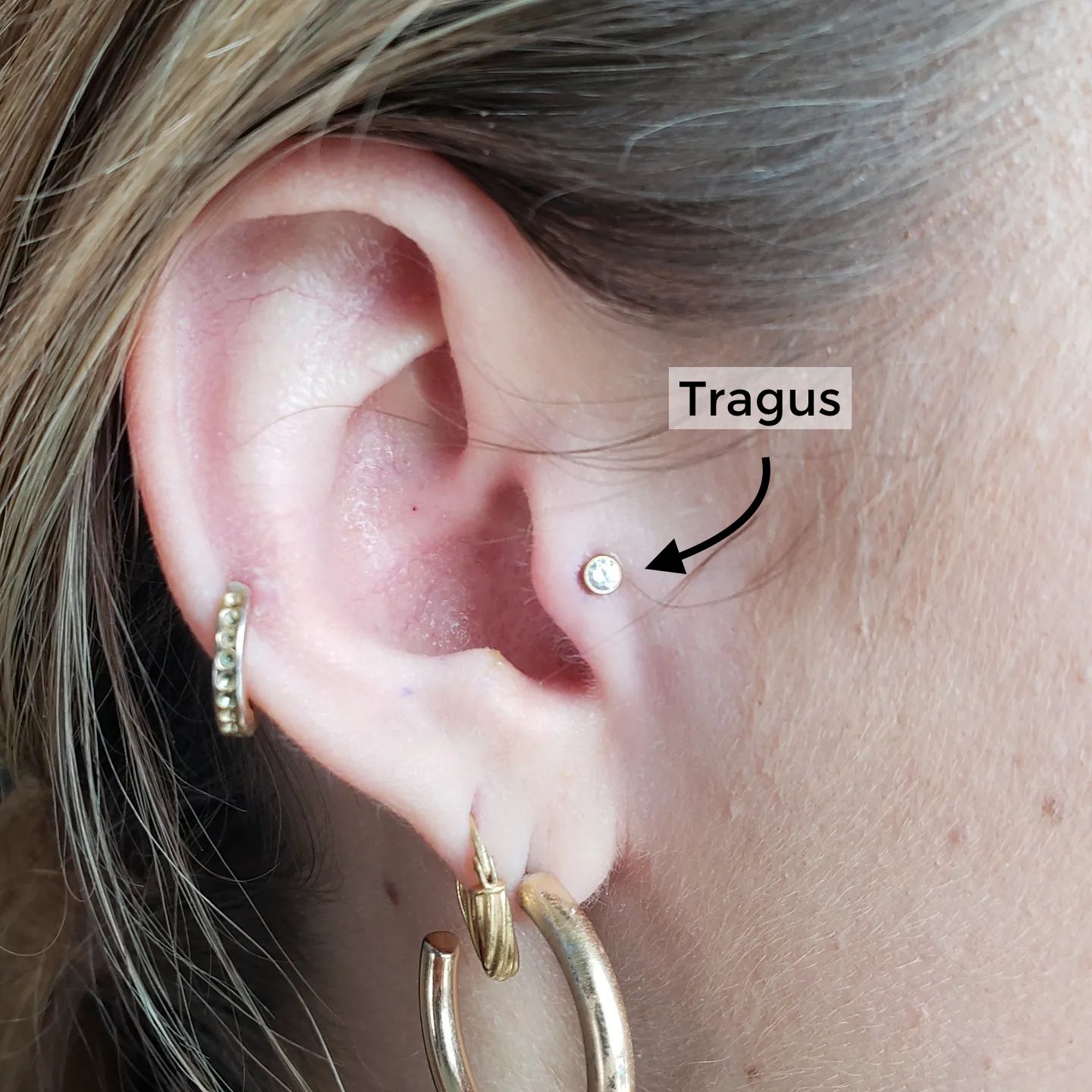What is a Tragus Piercing?
A tragus piercing sits on the small area of cartilage that partially covers your ear canal. In terms of anatomy, the outer ear is made up of cartilage and skin. While the fleshy lobe remains the preferred choice among traditionalists looking to get pierced, areas of cartilage, like the tragus, may entice those interested in something slightly different, or in addition to, their already pierced lobe. You may have also heard of a surface tragus piercing, which is placed in the same area as the tragus piercing, except rather than puncturing the cartilage, just the skin is pierced. However, because the jewelry lies beneath the skin, there may be a higher probability of the body rejecting it, deeming it a foreign object that needs to be pushed out.The Different Ways To Pierce the Tragus
There are different methods to pierce the tragus. Some piercers may use standard piercing needles or modified needles, and the piercing may be done from front to back or back to front. The needles may also be curved.Pain and Healing Time
A tragus piercing is considered to be relatively low on the pain scale, with a rating of around 4 out of 10, which is similar to a helix placement. However, during the healing process, it can be a bit tricky to keep the tragus clean. Therefore, you need to take extra precautions when using earphones, earbuds, or speaking on the phone. These devices can irritate the area and lead to infection if not treated properly. It is best to avoid putting any of these objects near or in your ears for the first few weeks after getting your piercing. Generally, the healing time for a tragus piercing is between 6-12 months. Be sure to visit our After Care page for up to date information.
